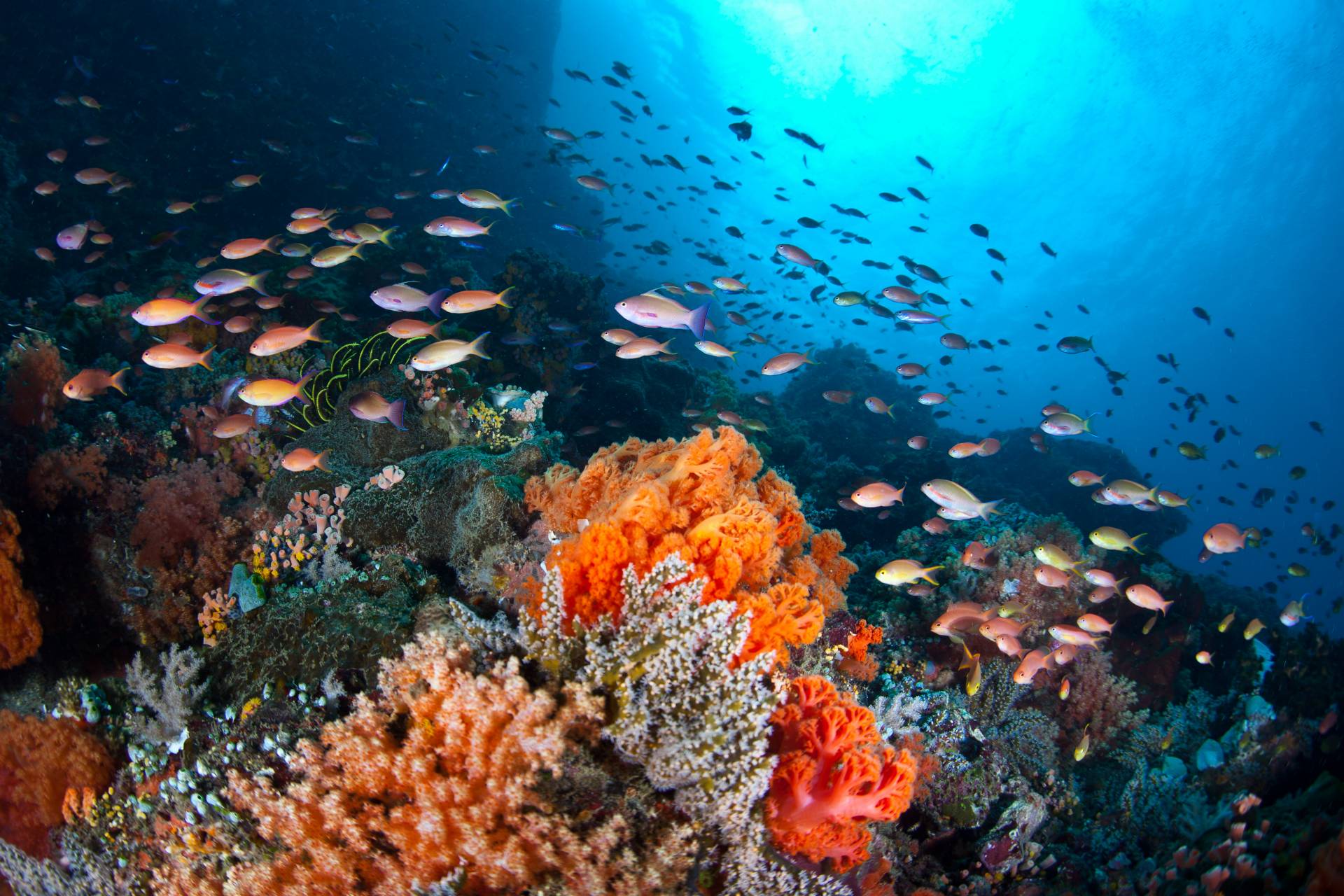New Global Study Finds Protecting Select Ocean Areas Boosts Total Catches and Reduces Carbon Emissions
Oceana campaigns to protect marine habitats and species from destructive fishing methods, like bottom trawling, to help restore the world’s oceans and feed the world
Press Release Date
Friday, March 19, 2021
Location: Washington, DC
Contact: Gillian Spolarich: gspolarich@oceana.org 202-467-1909
Washington, DC – This week, a new study titled “Protecting the global ocean for biodiversity, food and climate” was published in the scientific journal Nature. The study reveals that protecting select areas of the world’s oceans from fishing practices, including destructive bottom trawling, and other damaging activities helps safeguard critical habitat, boost biodiversity, and reduce global carbon emissions.
“A key finding of this study is that it’s possible to save the oceans and help feed the world,” said Oceana Chief Scientist Katie Matthews, Ph.D. “This research reveals that strategically placed marine protected areas (MPAs) that prohibit fishing can increase the number of fish in our waters, so much so that it could increase the catch of seafood by over 8 million metric tons relative to business as usual. If we give fish and our oceans a little help, they can come back. Restoring the world’s oceans is urgent and necessary to alleviate global hunger and malnutrition, especially as the impacts of our climate crisis become more apparent.”
Globally, our oceans have absorbed 90% of the extra heat resulting from human-caused greenhouse gas emissions, according to the Fourth National Climate Assessment. But additional carbon is also being released into the oceans during bottom trawling, a destructive fishing method that drags large nets across the seafloor snagging deep sea corals and stirring up sediment. This remobilization of carbon is comparable to global aviation’s annual emissions and exceeds the annual emissions of all countries except China, the United States, Russia, and Japan. Stopping bottom trawling – especially across pristine seafloor – keeps that carbon locked away.
“Smart ocean protection will help to provide cheap natural climate solutions, make seafood more abundant and safeguard imperiled marine species – all at the same time,” said study co-author, Killam Research Professor at Dalhousie University and Oceana Science Advisor Dr. Boris Worm in a statement. “The benefits are clear. If we want to solve the three most pressing challenges of our century – biodiversity loss, climate change and food shortages – we must protect our ocean.”
“The oceans are mankind’s biggest ally in the fight against climate change, but they are also bearing the brunt of impacts, from mass coral bleaching to vast dead zones. To ensure that bottom trawling doesn’t further contribute to this climate crisis – and to safeguard the oceans, food security, and the livelihoods and cultures of millions – we must protect key areas from this and other damaging practices,” Matthews added.
Bottom trawling destroys fragile seafloor habitats and ensnares large amounts of bycatch. Oceana’s science-based campaigns have helped protect nearly 4 million square miles of ocean, including protecting 90% of the seafloor off the U.S. West Coast from bottom trawling. Oceana has campaigned for years to end this destructive practice throughout the world, with additional victories in the Philippines, Spain, Belize, Chile, and Europe. Right now, in the UK, and following campaigning by Oceana and our allies, the government is considering a bottom trawl ban in the Dogger Bank MPA – something we hope to see in the other European MPAs that still allow this destructive practice.
Oceana is also campaigning to establish new marine protected areas, like Peru’s proposed Nasca Ridge National Reserve, bringing marine protection in the country’s waters from a paltry 0.5% up to nearly 8%. This undersea mountain chain and the waters above it are home to rare species and commercially important fish stocks, as well as being a transit area for migratory animals such as the blue whale and the leatherback sea turtle.
On Tuesday, Oceana’s International Board of Directors wrote the Hon. Francisco Sagasti Hochhausler, President of the Republic of Peru, to request the removal of an eleventh-hour provision to allow bottom longline fishing for Patagonian toothfish in the proposed Nasca Ridge National Reserve. This fishing method could damage the very seafloor and seamounts the Reserve is intended to protect, entangling deep sea corals and hauling up bycatch of inherently vulnerable deep sea species. The government of Peru is soliciting public comments on the proposed Nasca Ridge National Reserve until March 22.
###
Oceana is the largest international advocacy organization dedicated solely to ocean conservation. Oceana is rebuilding abundant and biodiverse oceans by winning science-based policies in countries that control one-third of the world’s wild fish catch. With more than 225 victories that stop overfishing, habitat destruction, pollution, and the killing of threatened species like turtles and sharks, Oceana’s campaigns are delivering results. A restored ocean means that 1 billion people can enjoy a healthy seafood meal, every day, forever. Together, we can save the oceans and help feed the world. Visit www.oceana.org to learn more.
###


